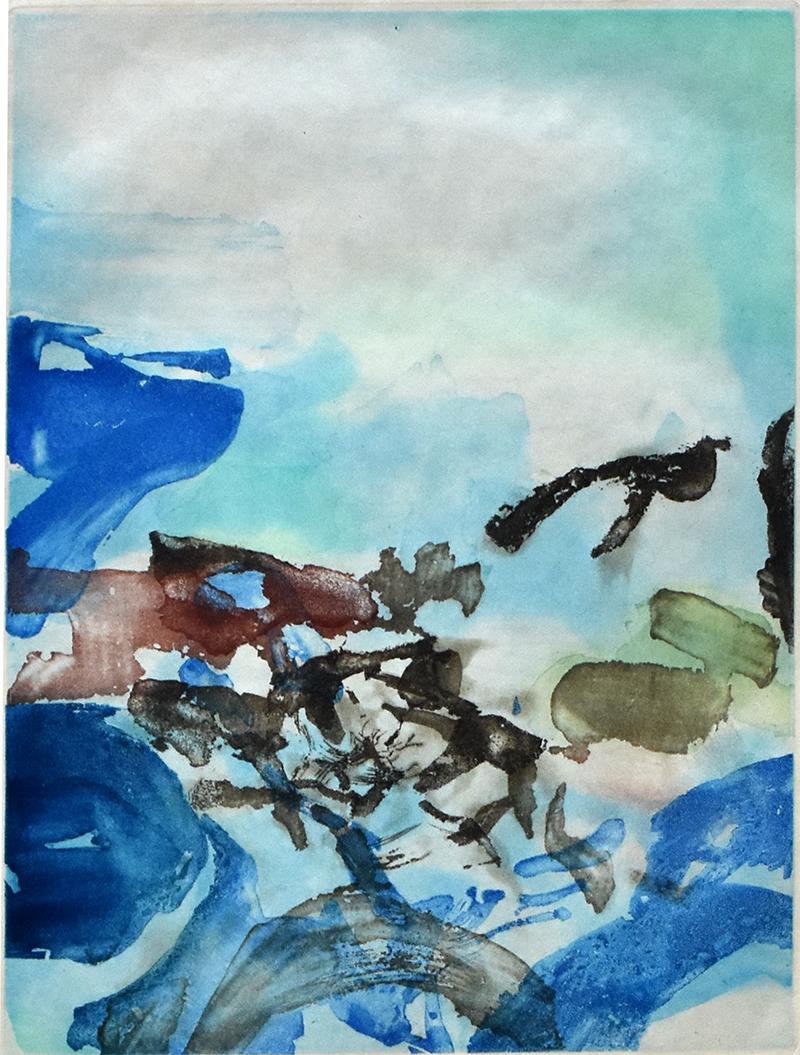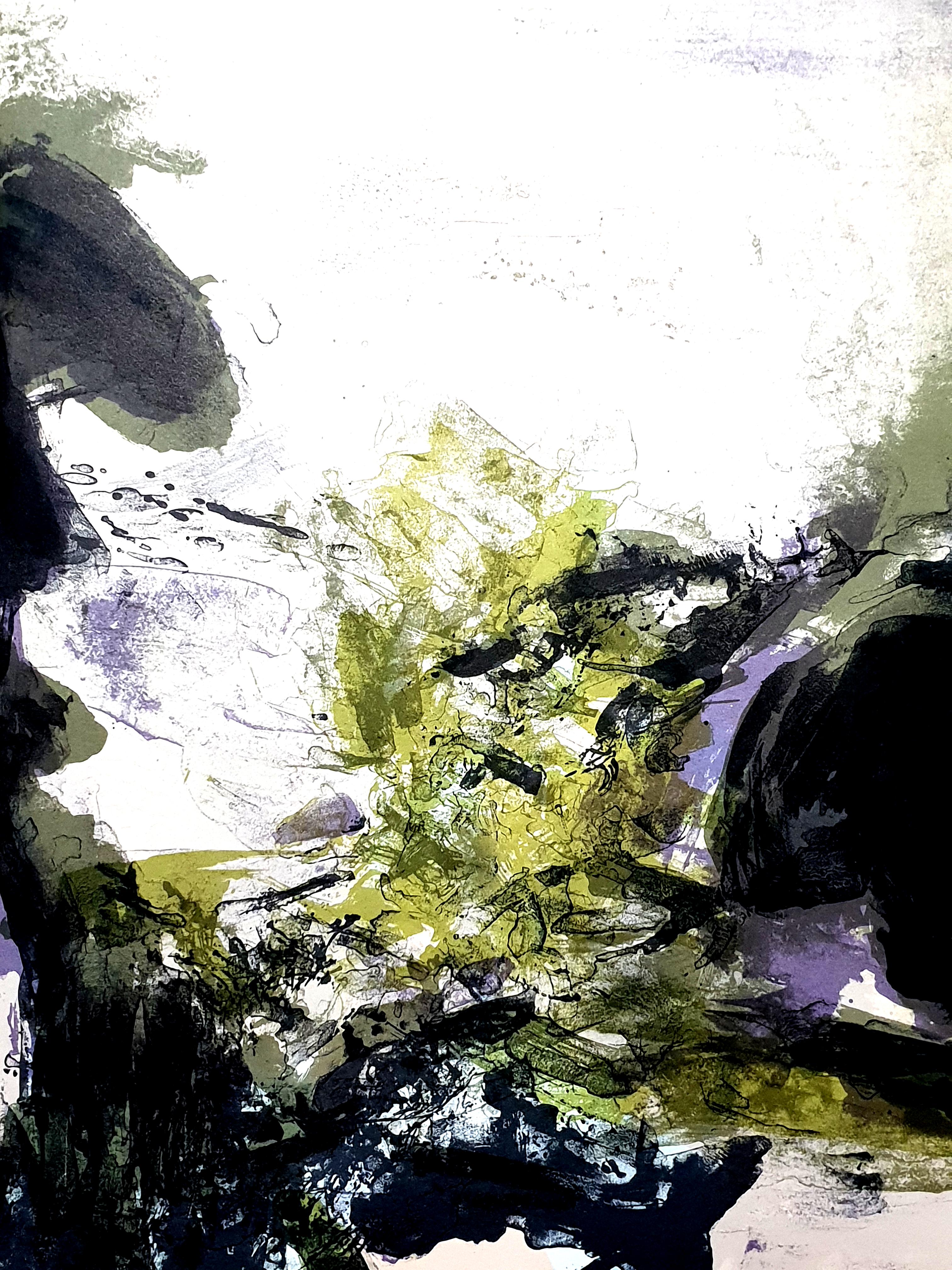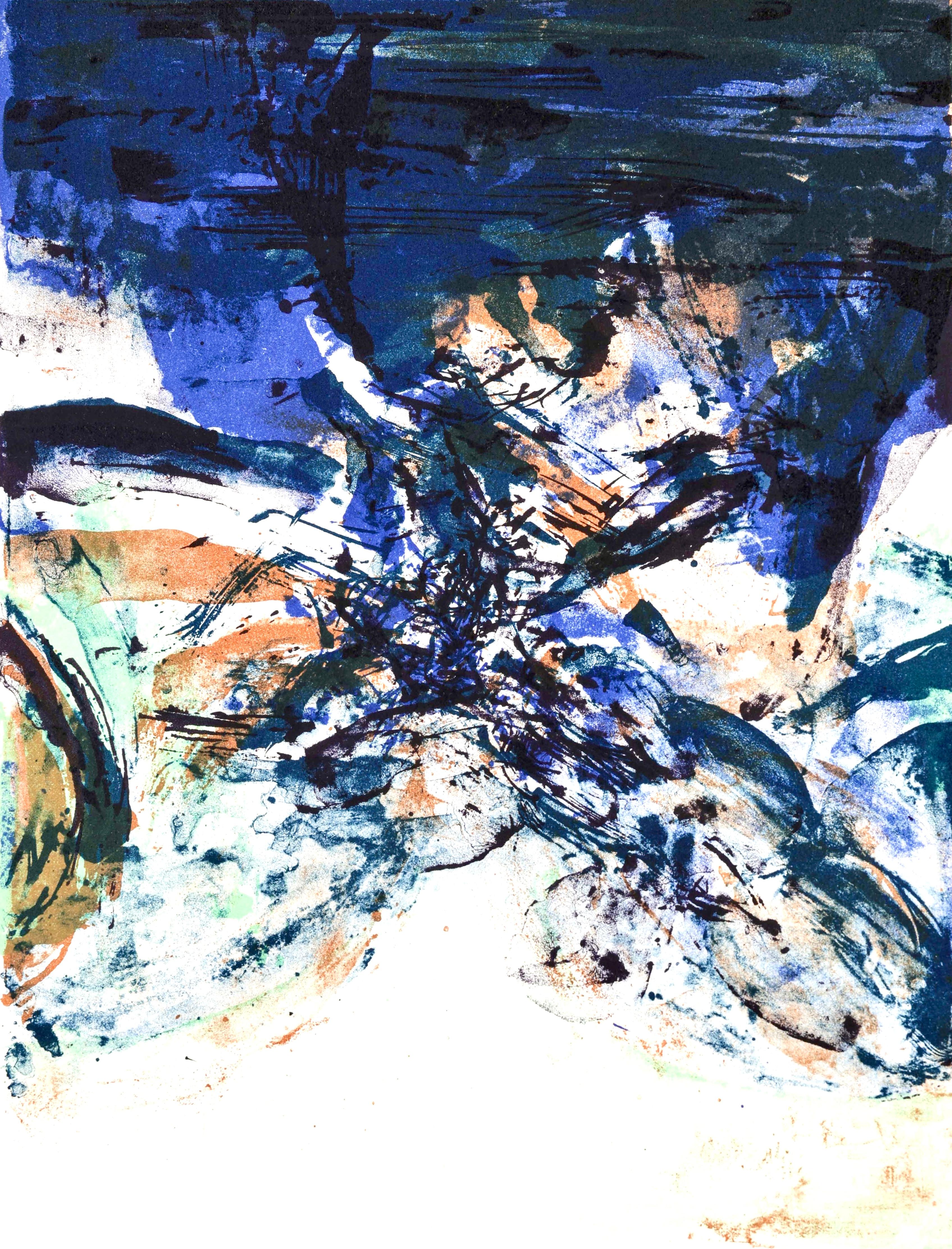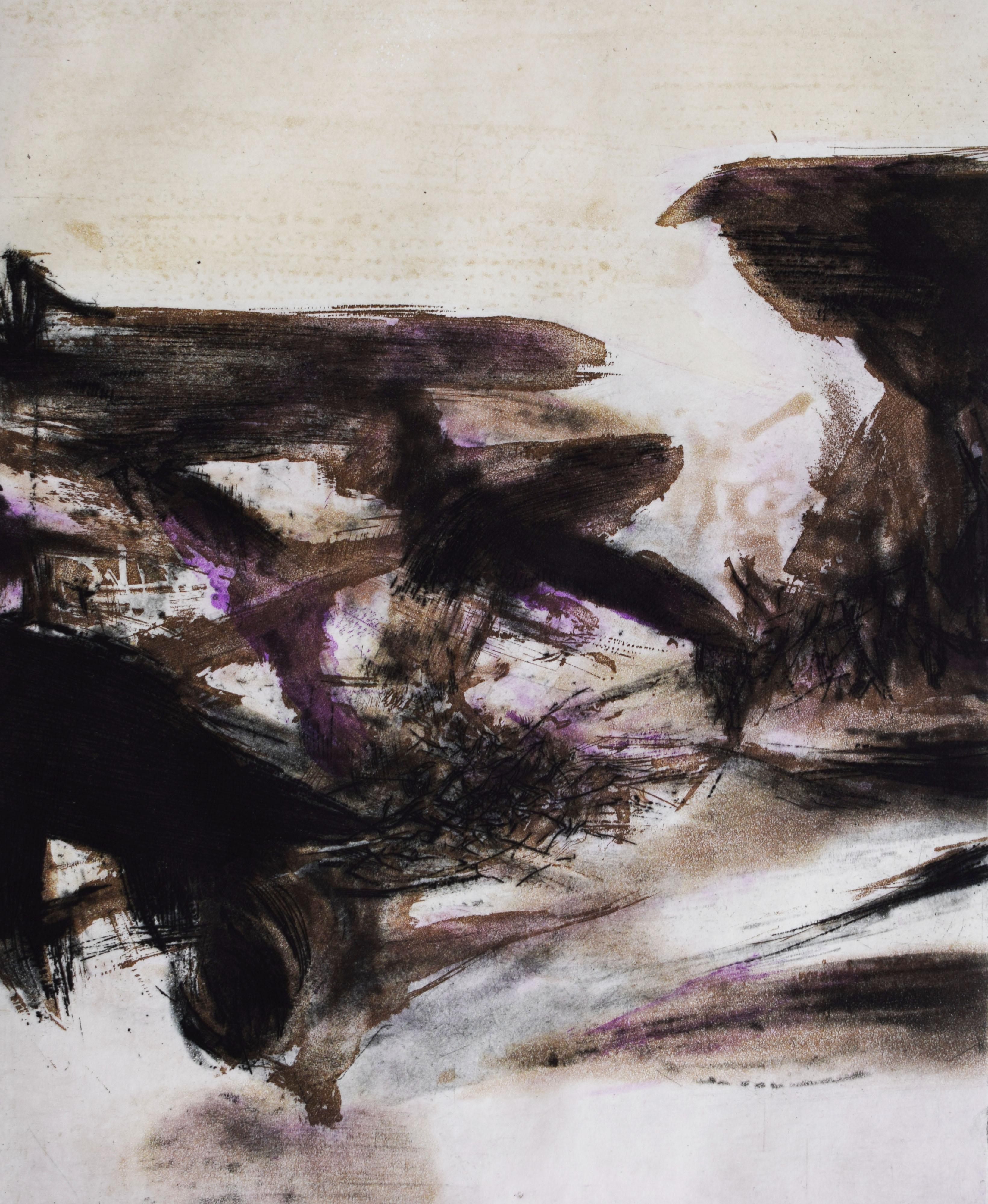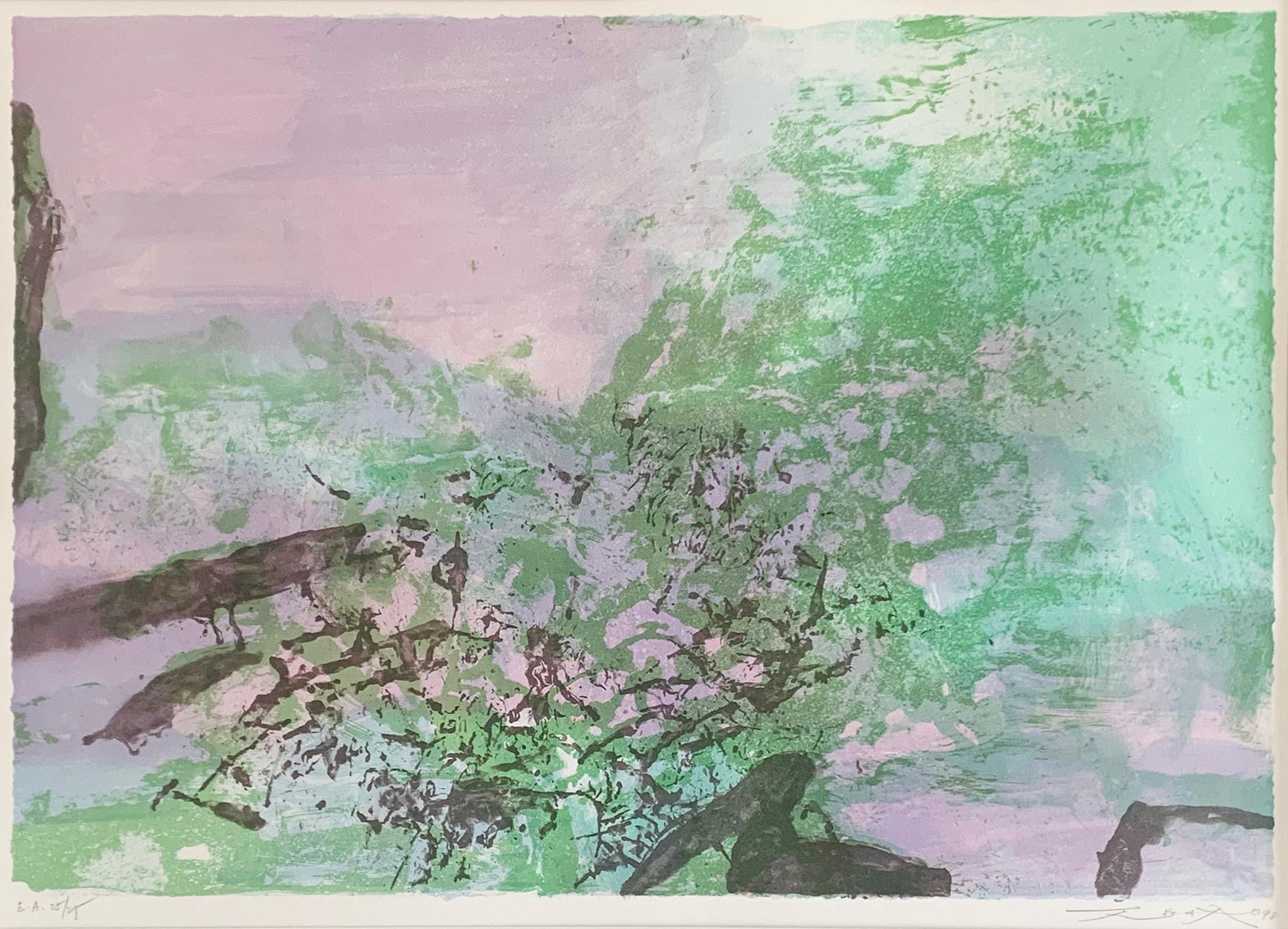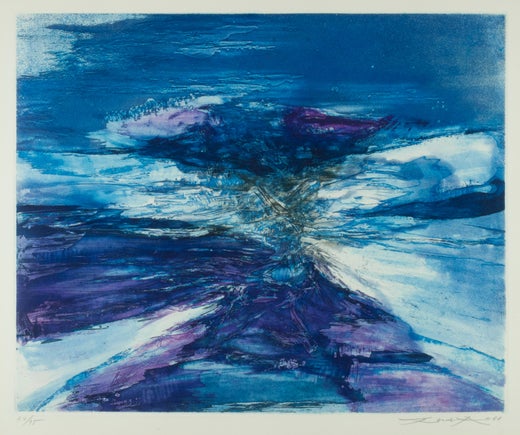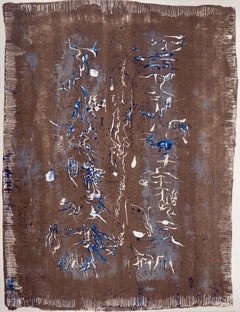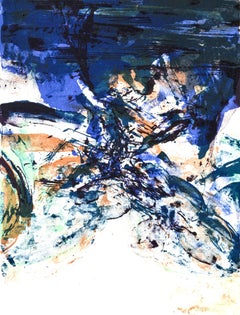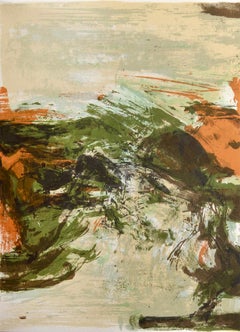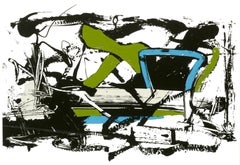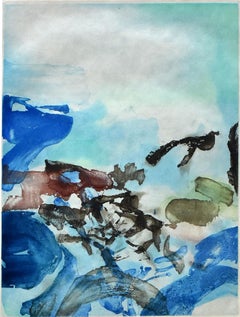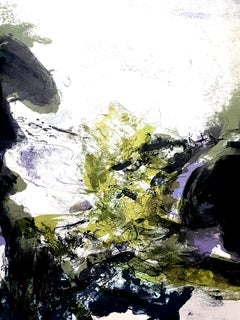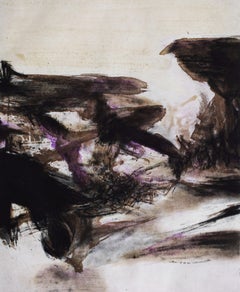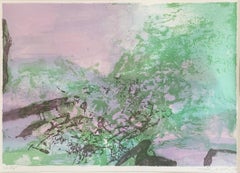This exquisite lithograph by Zao Wou-Ki (1920–2013), titled Sans titre (Untitled), from the album XXe Siecle, Nouvelle serie, XXXIIIe Annee, No. 37, Decembre 1971, originates from the 1971 edition published by Societe Internationale d'Art XXe Siecle, Paris, under the direction of Gualtieri di San Lazzaro, editeur, Paris, and printed by Mourlot Freres, Paris, 1971. Sans titre reflects Zao Wou-Ki’s visionary synthesis of gesture, color, and meditative abstraction that united Eastern philosophy with Western modernism.
Executed as a lithograph on velin paper, this work measures 12.5 x 9.75 inches. Unsigned and unnumbered as issued. The edition exemplifies the refined craftsmanship of Mourlot Freres, Paris.
Artwork Details:
Artist: Zao Wou-Ki (1920–2013)
Title: Sans titre (Untitled)
Medium: Lithograph on velin paper
Dimensions: 12.5 x 9.75 inches (31.75 x 24.77 cm)
Inscription: Unsigned and unnumbered as issued
Date: 1971
Publisher: Societe Internationale d'Art XXe Siecle, Paris, under the direction of Gualtieri di San Lazzaro, editeur, Paris
Printer: Mourlot Freres, Paris
Catalogue raisonne reference: Zao, Wou-ki. Zao Wou-Ki: Les Estampes, 1937-1974. Yves Riviere, 1975, illustration 212.
Condition: Well preserved, consistent with age and medium
Provenance: From the album XXe Siecle, Nouvelle serie, XXXIIIe Annee, No. 37, Decembre 1971, published by Societe Internationale d'Art XXe Siecle, Paris; printed by Mourlot Freres, Paris, 1971
About the Publication:
Gualtieri di San Lazzaro's XXe Siecle (Twentieth Century) was one of the most influential art journals of the modern era, founded in Paris in 1938 as a platform for the greatest painters, sculptors, and writers of the 20th century. San Lazzaro, a visionary editor, critic, and champion of modernism, believed that art and literature should coexist as expressions of a shared human imagination. Under his direction, XXe Siecle became a cultural bridge between Europe and the wider world, publishing special issues devoted to leading figures such as Picasso, Matisse, Chagall, Braque, Calder, Miro, Kandinsky, and Leger. Each edition combined essays by renowned critics and poets with original lithographs and woodcuts printed by the foremost ateliers of Paris, Milan, and New York, including Mourlot, Curwen, and Amilcare Pizzi, creating a uniquely rich dialogue between text and image. The 1960 issue, XXe Siecle, Nouvelle serie, No. 14, showcased Daphnis et Chloe, one of Chagall’s most celebrated lithographic subjects, coinciding with his work on the monumental suite of lithographs inspired by the same pastoral tale, published by Teriade. Through this publication, San Lazzaro further cemented Chagall’s reputation as the modern poet of color and love, uniting myth, nature, and emotion in visual form. Today, XXe Siecle remains an essential record of 20th century modernism, celebrated for its seamless integration of fine art, literature, and design.
About the Artist:
Zao Wou-Ki (1920–2013) was a Chinese French painter whose poetic fusion of Eastern philosophy and Western abstraction established him as one of the most influential and internationally revered artists of the 20th century. Born in Beijing and trained at the Hangzhou National College of Art under the modernist master Lin Fengmian, Zao developed a lifelong philosophy of artistic harmony, uniting the spirit of Chinese calligraphy with the expressive freedom of European modernism. Moving to Paris in 1948, he immersed himself in the vibrant postwar art scene and became a key figure of the Ecole de Paris, forming friendships with Pablo Picasso, Alexander Calder, Alberto Giacometti, Salvador Dali, Joan Miro, Wassily Kandinsky, Marcel Duchamp, and Man Ray. These interactions profoundly shaped his aesthetic vision: from Picasso he absorbed structural invention, from Miro and Calder he learned rhythmic balance and play, from Kandinsky a belief in the spiritual power of color, and from Duchamp and Man Ray an understanding of art as philosophical inquiry. Zao’s early paintings reflected the influence of Paul Klee, whose poetic abstraction inspired him to explore symbolic form and rhythm, but by the 1950s, he abandoned figurative motifs to create vast, luminous fields of motion and energy that blended the techniques of Western abstraction with the meditative essence of Chinese ink painting. His signature style, sweeping calligraphic gestures layered in radiant pigments, captured elemental forces such as wind, water, and light not through representation but through emotion, embodying what he called “painting the breath of life.” Throughout the 1960s and 1970s, Zao achieved international acclaim, exhibiting at the Museum of Modern Art, the Tate, and the Centre Pompidou, and becoming a bridge between Eastern and Western modernism. His paintings, dynamic yet tranquil, spontaneous yet precise, reflect the Taoist principle of balance and the belief that creation arises from the dialogue between chaos and order. In later decades, he deepened this synthesis in monumental works such as Juin Octobre 1985 and Hommage a Claude Monet, where radiant layers of color and space evoke cosmic landscapes of thought and feeling. His influence spread across generations, inspiring artists such as Chu Teh Chun, Wu Guanzhong, Pierre Soulages, and contemporary figures exploring cross cultural abstraction. Collectors and curators continue to celebrate his art for its technical mastery, emotional depth, and universal language of light and motion. Zao Wou-Ki remains a cornerstone of modern abstraction, a painter philosopher who transformed gesture into poetry and silence into color. His highest auction record was achieved by Juin Octobre 1985, which sold for approximately 65000000 USD at Sotheby’s Hong Kong on September 30, 2018, reaffirming his legacy as one of the most visionary, spiritual, and collectible artists of the modern era.
Zao Wou-Ki Sans titre, Zao Wou-Ki XXe Siecle 1971, Zao Wou-Ki Mourlot lithograph, Zao Wou-Ki velin paper, Zao Wou-Ki collectible print.
